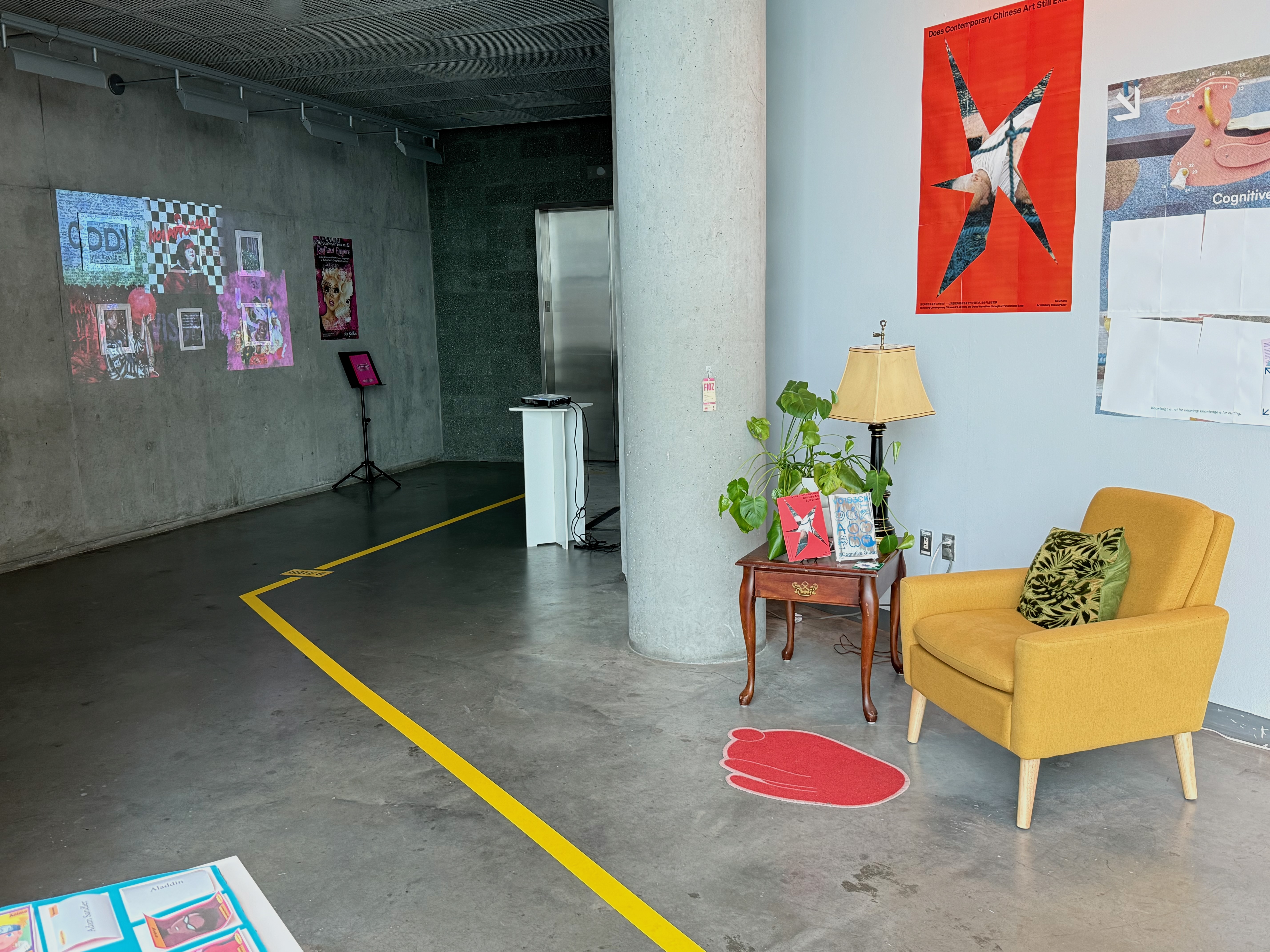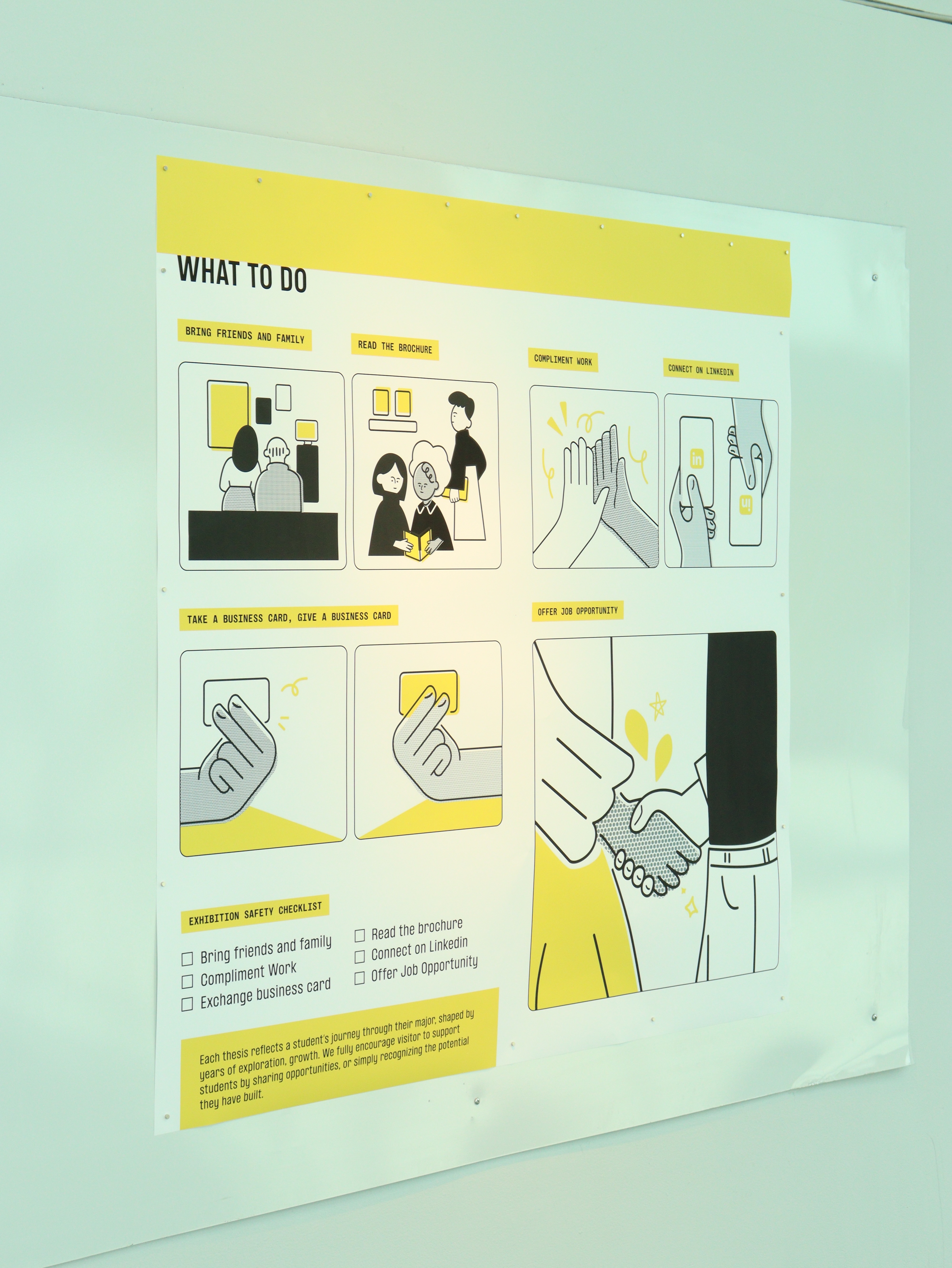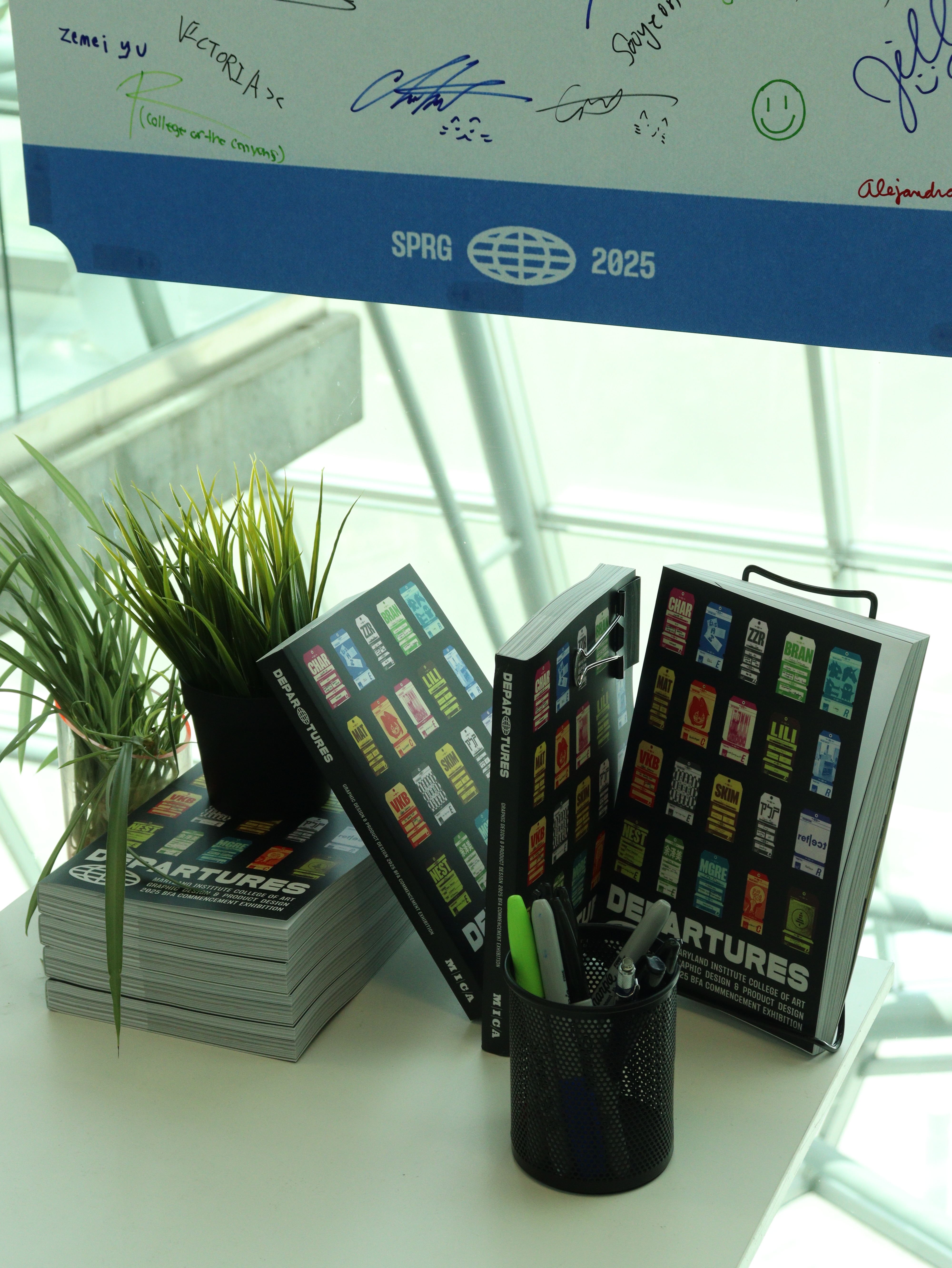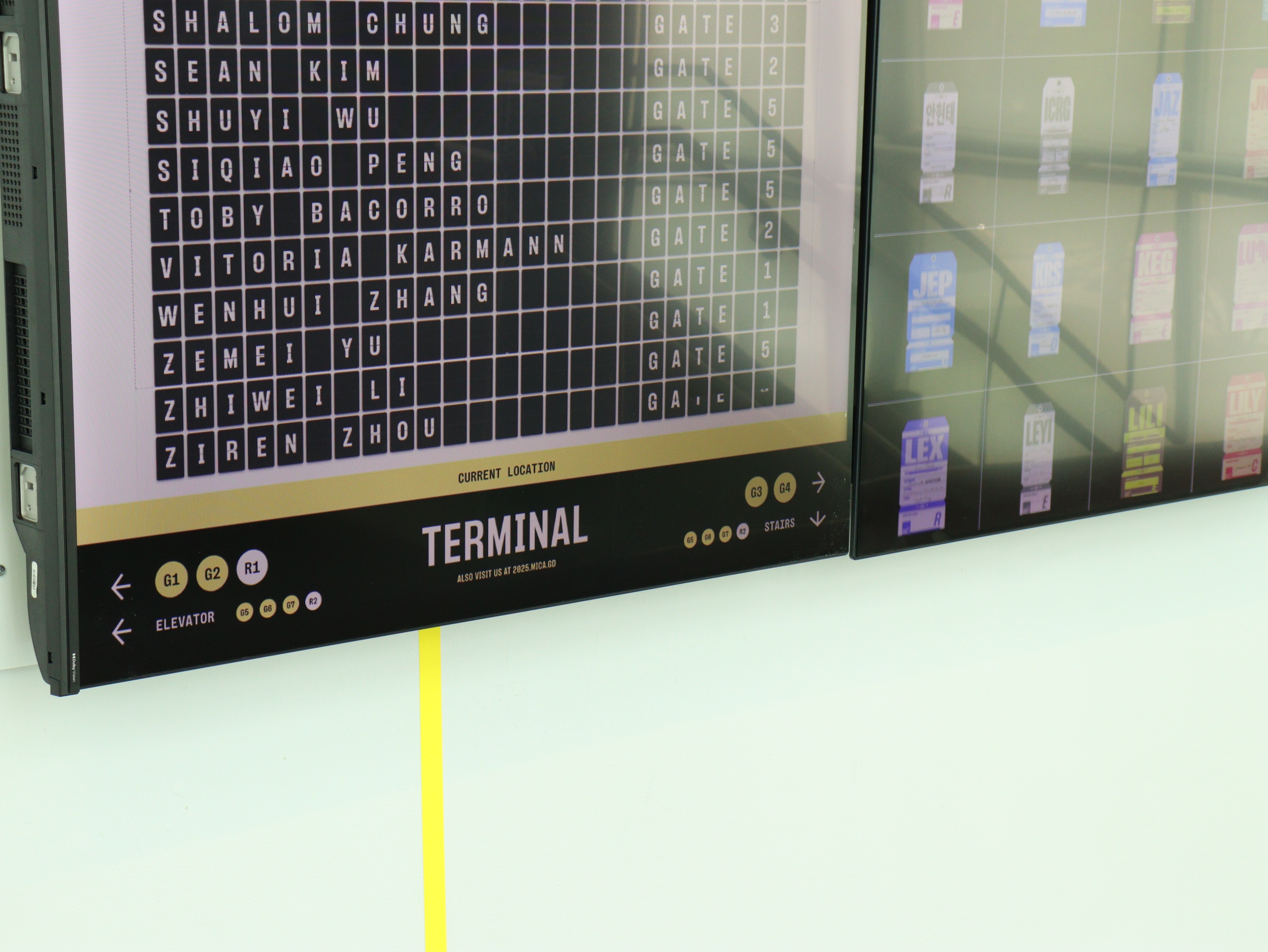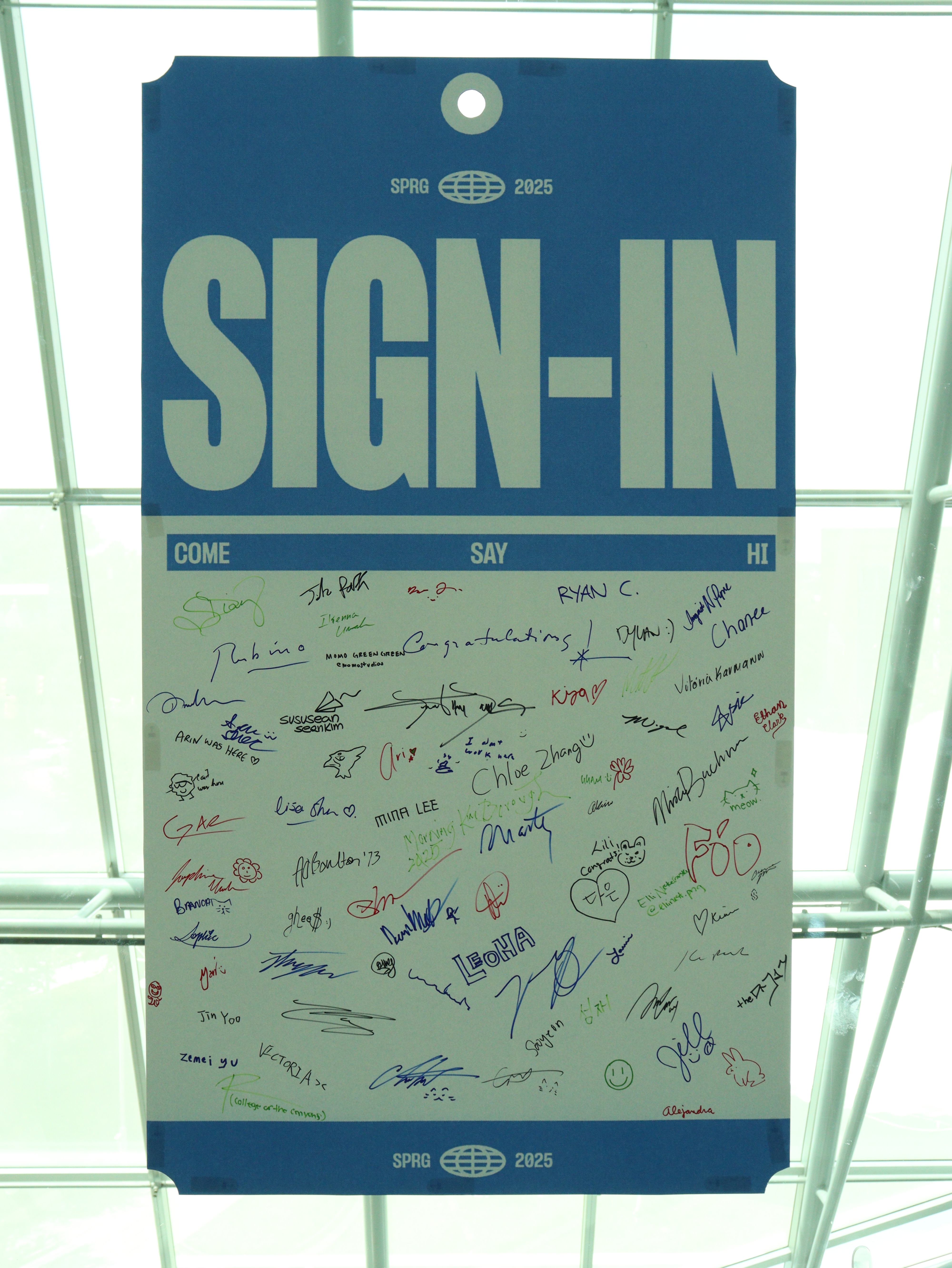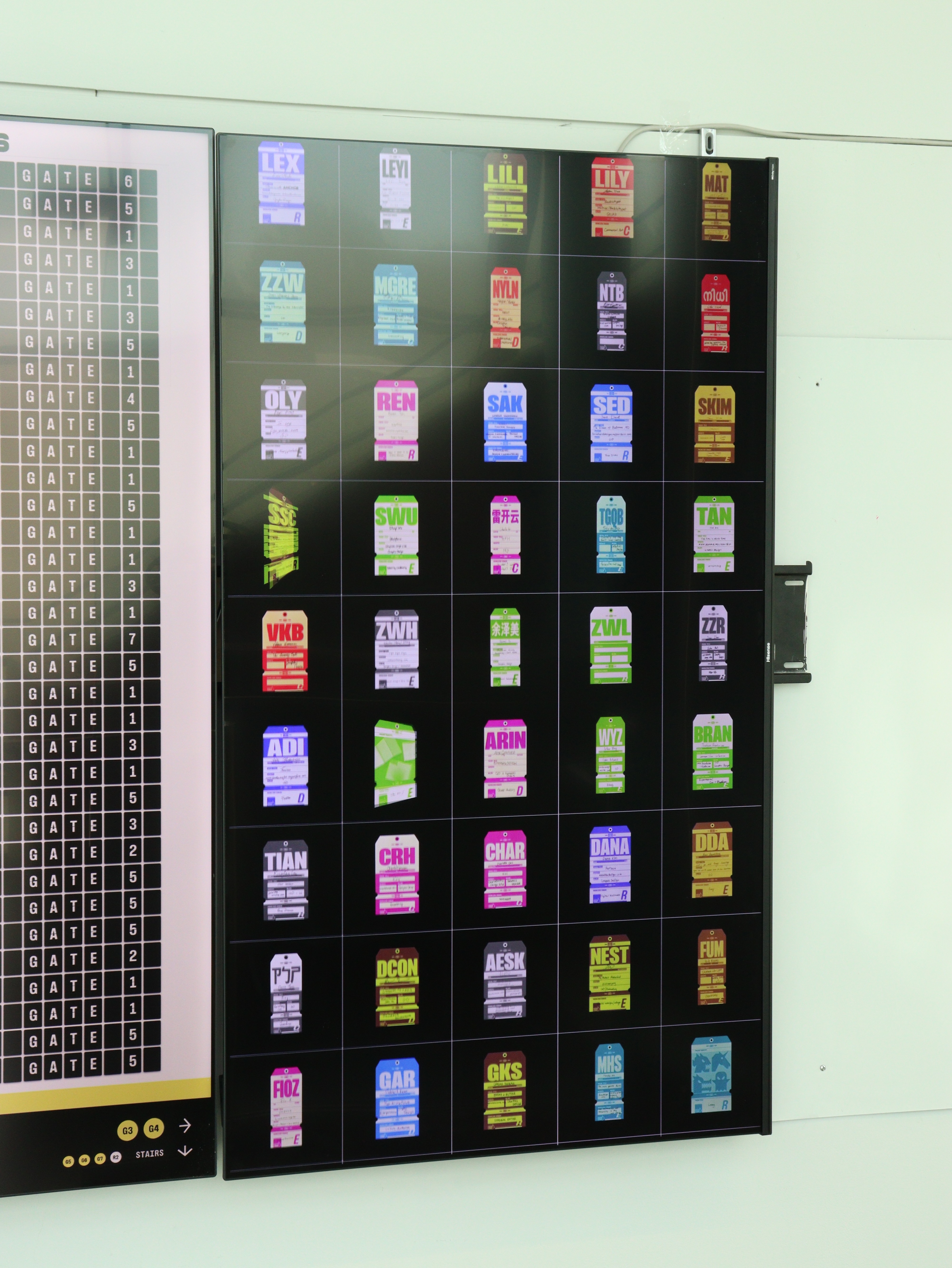Why Departures?
We chose Departures as our thesis theme to mark our transition from being students to designers in the ‘real’ world. This thesis exhibition serves as our last collaborative show as we prepare to depart into the next stages of our lives. Departures as a theme reflects our time here at MICA and the unlimited directions we’re each ready to pursue.
The tags used throughout our exhibition are inspired by luggage tags attached to a traveler’s belongings.
Our thesis projects represent the personal items we’re bringing with us on this departure. And just like with any journey, we never know what new things will be added to our baggage once we land in the next chapter of our lives.
These tags not only reflect where we’re headed, but also where we began. They serve as reminders of our growth—of the questions we asked, the risks we took, and the identities we shaped along the way. One day, looking back at these tags might remind us of the first steps we took as designers, full of uncertainty, excitement, and hope.
The tags used throughout our exhibition are inspired by luggage tags attached to a traveler’s belongings.
Our thesis projects represent the personal items we’re bringing with us on this departure. And just like with any journey, we never know what new things will be added to our baggage once we land in the next chapter of our lives.
These tags not only reflect where we’re headed, but also where we began. They serve as reminders of our growth—of the questions we asked, the risks we took, and the identities we shaped along the way. One day, looking back at these tags might remind us of the first steps we took as designers, full of uncertainty, excitement, and hope.
the four fields:
We incorporated the four key fields of industrial design that we explored during our course into the tags assorting symbols:
C – Commercial
D – Discursive
E – Experimental
R – Responsible
Each symbol reflects a differentapproach or intention behind ourthesis projects, helping guide viewers through the diverse perspectives and purposes that shaped our work.
C – Commercial
D – Discursive
E – Experimental
R – Responsible
Each symbol reflects a differentapproach or intention behind ourthesis projects, helping guide viewers through the diverse perspectives and purposes that shaped our work.
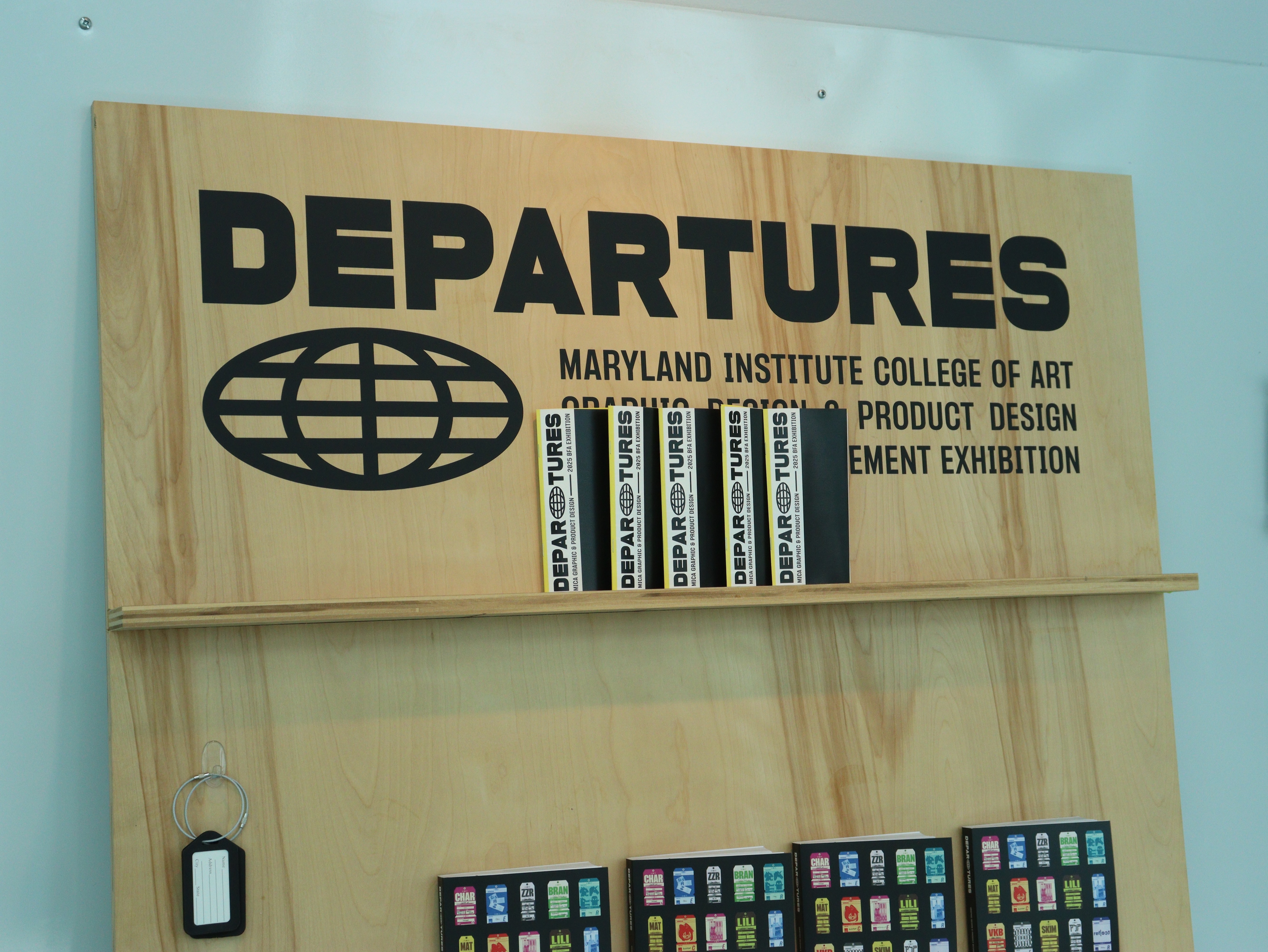
A word from our design chair
This year’s graduating class hastitled their show Departures—and it truly is one. A departure from the expected. A departure into the world. A departure from the last shadows of pandemic disruption, and into something that feels fully alive, curious, and new.
These students have journeyed through shifting conditions and emerged with work that is both grounded and exploratory. Some dove headfirst into material research, others into systems, narratives, and forms of visual expression that push the boundaries of their disciplines. Many have chosen to work in the fertile in-between—where questions are big, outcomes are emergent, and collaboration sparks the most surprising results.
This year also marks a new kind of departure: for the first time, Graphic Design and Product Design students came together in a shared senior studio experience. The results speak for themselves. Graphic designers began thinking more physically, materially; product designers brought conceptual rigor and systems-thinking into play. The conversations were rich, the work deepened, and the exhibition itself was a collaborative labor led by a small team of committed students. What you’ll find in these pages is not just the culmination of years of study—it’s a signal of where design is heading. Thoughtful, bold, funny, caring, provocative, practical, and weird in all the best ways. We couldn’t be prouder to introduce this graduating class. Their departures are just beginning.
Kristian Bjørnard
Chair, Design & Product Design
MICA April, 2025
These students have journeyed through shifting conditions and emerged with work that is both grounded and exploratory. Some dove headfirst into material research, others into systems, narratives, and forms of visual expression that push the boundaries of their disciplines. Many have chosen to work in the fertile in-between—where questions are big, outcomes are emergent, and collaboration sparks the most surprising results.
This year also marks a new kind of departure: for the first time, Graphic Design and Product Design students came together in a shared senior studio experience. The results speak for themselves. Graphic designers began thinking more physically, materially; product designers brought conceptual rigor and systems-thinking into play. The conversations were rich, the work deepened, and the exhibition itself was a collaborative labor led by a small team of committed students. What you’ll find in these pages is not just the culmination of years of study—it’s a signal of where design is heading. Thoughtful, bold, funny, caring, provocative, practical, and weird in all the best ways. We couldn’t be prouder to introduce this graduating class. Their departures are just beginning.
Kristian Bjørnard
Chair, Design & Product Design
MICA April, 2025
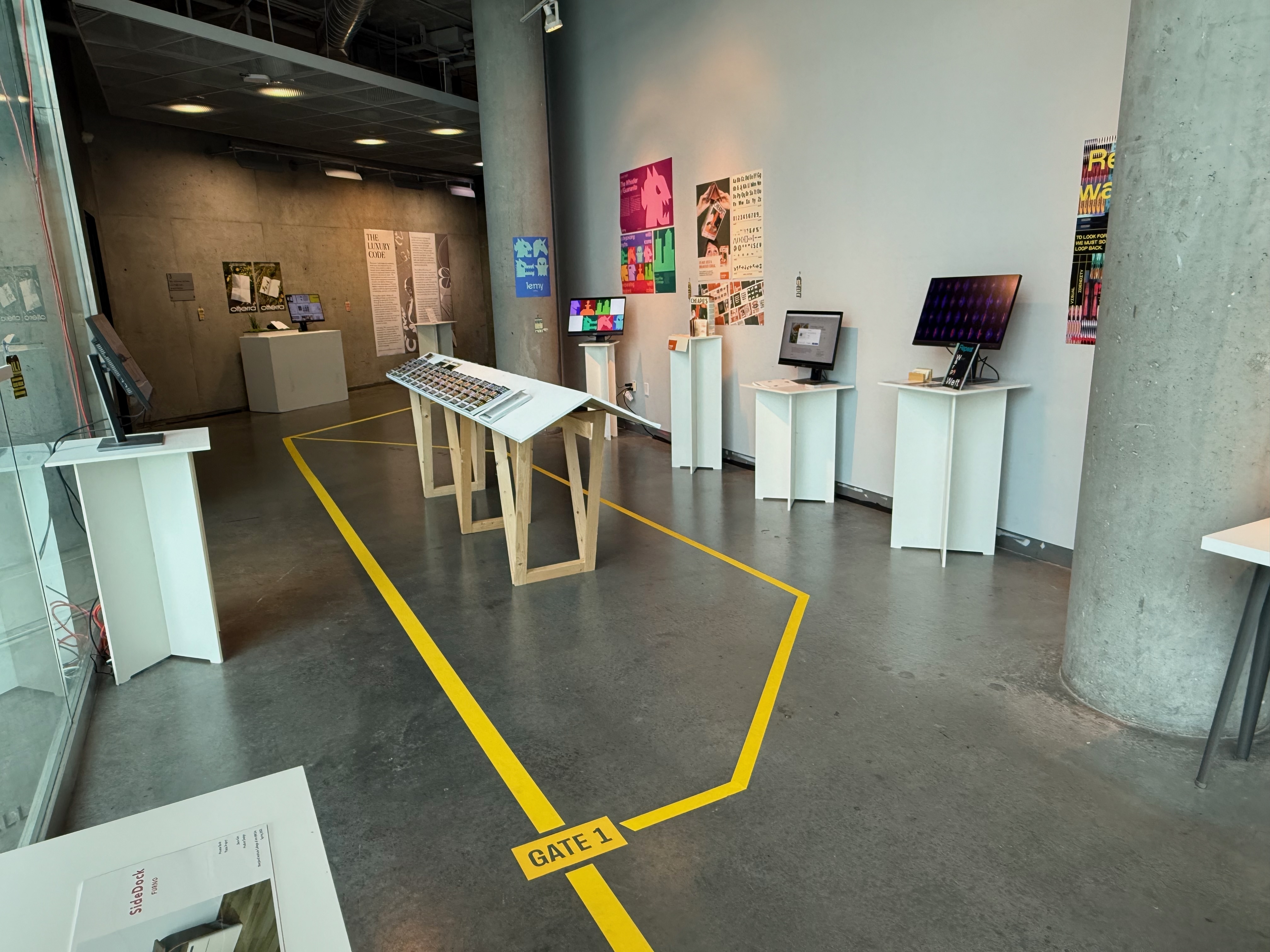
A word from our Product Design professor
When I was asked for a text by the design team of our senior exhibition, “Departures,” my first thought as a good undergraduate professor was to consider the audience. Is it the graduating students themselves, the family and friends who have supported them, the larger design community that our graduates are about to enter, or is it the students’ future selves when they look back at this work after several moves years from now?
In a rash, and against my own oft given advice: all of the above.
As a professor who primarily teaches product design, it was refreshing to work with graphic design students and colleagues. Contact with new references, critiques, and prompts is one of the joys of being a design professor. This time it was the work and thinking of Elliott Earls in a short assignment to develop an aphorism and equally pithy poster to codify their thinking mid-process. Earls has a particularly evocative method of critiquing art/design work based on a sound waveform - Attack, Decay, Sustain, Release.
Attack - The visceral, embodied pre-language reaction to a work before you start thinking about it - or the precognitive tickle or gut-punch.
Decay - The moment the work is brought under “cognitive load” - or when the audience/viewer/user considers, filtered through language, what this thing in front of them is.
Sustain - The continued reverberations of “intellectual, emotional, or phenomenological traction in the direct presence of the work” - or what holds one, like a tractor beam, for a few more seconds or minutes before moving on to the next piece of stimuli.
Release - The “level of cognitive persistence of a work after the viewer has left the direct presence of the object/experience.” - or the afterimage, persistently rhyming its way into the viewer’s future like a near worm.
As you explore the projects in this exhibition, give each phase its moment - Attack, Decay, Sustain, Release... again, Attack, Decay, Sustain, Release...
The joy and power of the ADSR model, apart from not being discipline-specific or scale-dependent, is that it works best in a series, one after the other. Performed over and over again, not just at the end of a project, but many times during and after. Perhaps you can visualize a series of waveforms passing across a computer screen, end to end, like an EKG. A heart beat of creative reflection. As a mechanically minded thinker, I find it evocative of other reciprocal motions like the chug-a-chug-a of a train steam engine or the up-and-down bellows that power its coal furnace.
At the risk of awkwardly transposing design advice on to life advice, and to address the unedited audience of this text, consider the reciprocal motions of a creative practice, yours or those that brought you here. Project, after project, after project[...] propelling a creative career. Not a precarious set of linear steps but breaths, in and out, slowly inflating a balloon or blowing on the hot coals of creative practice.
Karl Williamson
Professor, Product Design
MICA April, 2025
In a rash, and against my own oft given advice: all of the above.
As a professor who primarily teaches product design, it was refreshing to work with graphic design students and colleagues. Contact with new references, critiques, and prompts is one of the joys of being a design professor. This time it was the work and thinking of Elliott Earls in a short assignment to develop an aphorism and equally pithy poster to codify their thinking mid-process. Earls has a particularly evocative method of critiquing art/design work based on a sound waveform - Attack, Decay, Sustain, Release.
Attack - The visceral, embodied pre-language reaction to a work before you start thinking about it - or the precognitive tickle or gut-punch.
Decay - The moment the work is brought under “cognitive load” - or when the audience/viewer/user considers, filtered through language, what this thing in front of them is.
Sustain - The continued reverberations of “intellectual, emotional, or phenomenological traction in the direct presence of the work” - or what holds one, like a tractor beam, for a few more seconds or minutes before moving on to the next piece of stimuli.
Release - The “level of cognitive persistence of a work after the viewer has left the direct presence of the object/experience.” - or the afterimage, persistently rhyming its way into the viewer’s future like a near worm.
As you explore the projects in this exhibition, give each phase its moment - Attack, Decay, Sustain, Release... again, Attack, Decay, Sustain, Release...
The joy and power of the ADSR model, apart from not being discipline-specific or scale-dependent, is that it works best in a series, one after the other. Performed over and over again, not just at the end of a project, but many times during and after. Perhaps you can visualize a series of waveforms passing across a computer screen, end to end, like an EKG. A heart beat of creative reflection. As a mechanically minded thinker, I find it evocative of other reciprocal motions like the chug-a-chug-a of a train steam engine or the up-and-down bellows that power its coal furnace.
At the risk of awkwardly transposing design advice on to life advice, and to address the unedited audience of this text, consider the reciprocal motions of a creative practice, yours or those that brought you here. Project, after project, after project[...] propelling a creative career. Not a precarious set of linear steps but breaths, in and out, slowly inflating a balloon or blowing on the hot coals of creative practice.
Karl Williamson
Professor, Product Design
MICA April, 2025
